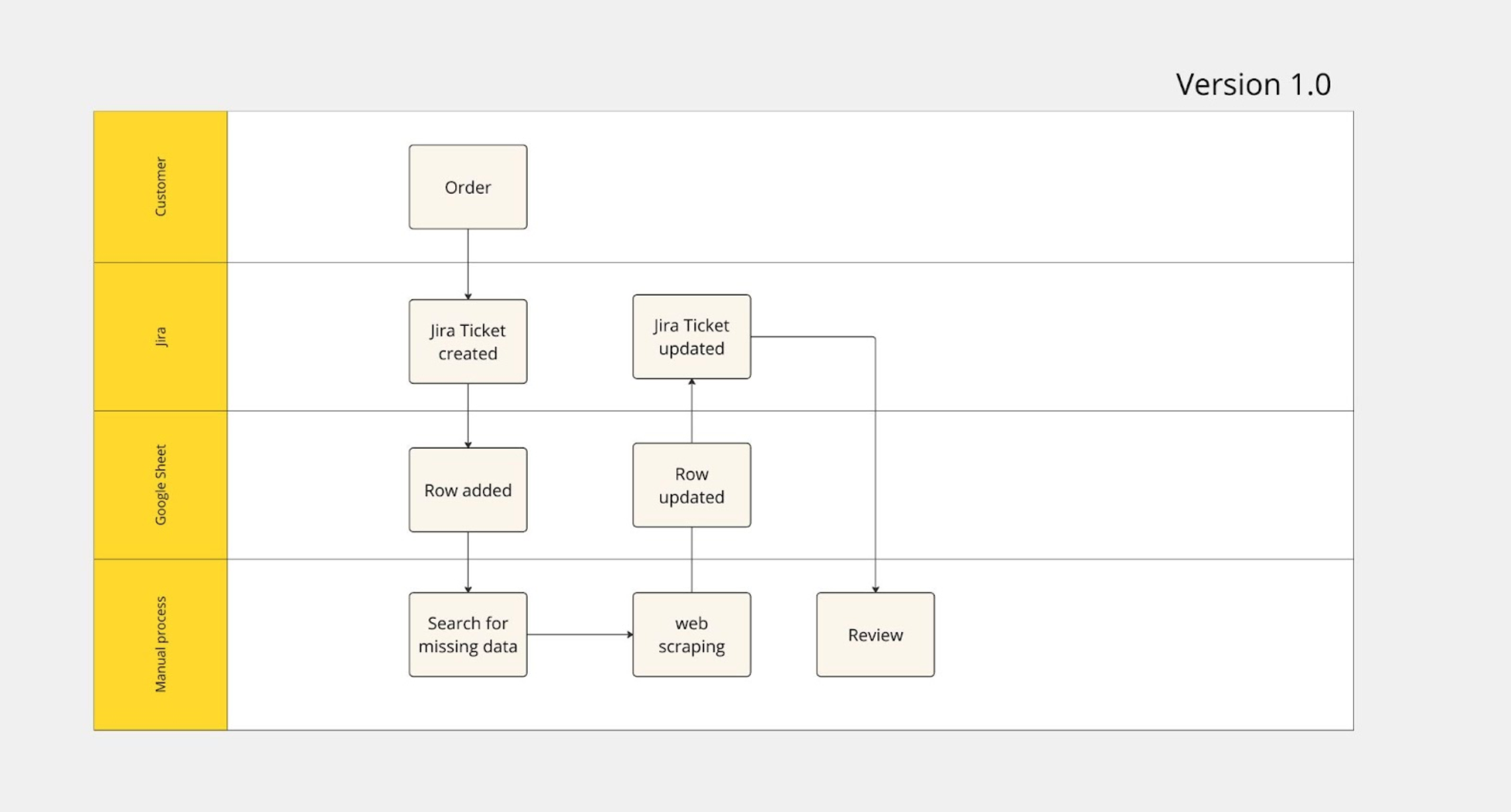In today’s fast-paced business environment, efficiency is critical. Many organizations are turning to automation to streamline operations and reduce the time spent on repetitive manual tasks. This shift not only enhances productivity but also allows employees to focus on more strategic work. In this blog post, we’ll explore how automation can transform day-to-day operations, focusing on a practical case study within an organization. We began our analysis by reviewing a Google Shee file that estimates the time savings from converting manual tasks into automated processes using make.com scenarios.
Data Analysis
Our journey begins with an analysis of various tasks that were traditionally performed manually in our company’s departments. We categorized these tasks into different scenarios ranging from small-scale (Case S) to extremely large-scale (Case XXL) operations. Each case was assessed for the number of operations, the frequency of these tasks per day, week, and month, and the potential time savings when automated using make.com (or another automation tool) scenarios.
Case Studies
Case S – Small Scale Automation: Initially, we automated five daily operations that involved basic data entry tasks. Assuming each manual operation would typically take about 2 minutes, even this small-scale automation led to a saving of 5 hours per month.

Case M – Medium Scale Automation: This scenario involved more complex tasks such as updating employee records and processing leave requests. Automating 40 operations per day, we saved approximately 40 hours monthly, showing a significant impact on departmental efficiency.

Case L – Large Scale Automation: The most extensive automation involved tasks like payroll processing and benefits management for a large number of employees. Although the frequency was lower, the complexity and volume of data were much higher. Here, the automation led to massive time savings, showcasing the power of scaling up automation efforts.

Streamlining Processes Through Automation: A Case Study
Introduction to Process Optimization
In the evolving landscape of business operations, efficiency and accuracy are paramount. With technological advancements, companies increasingly use automation to streamline workflows and enhance productivity. This segment explores a specific case study where critical modifications were made to a process, leading from version 1.0 to an optimized version 1.1, highlighting the power of automation in transforming business operations.
Analyzing the Original Workflow (Version 1.0)

Initially, our process involved several manual steps that were both time-consuming and prone to human error. These included extensive data searches, web scraping to collect necessary information, and multiple reviews to ensure data accuracy. Each task required significant manual intervention, from creating and updating Jira tickets to adding and updating data rows. This not only slowed down the operation but also increased the likelihood of mistakes.
Transition to Enhanced Workflow (Version 1.1)

Recognizing the need for improvement, we introduced substantial changes in version 1.1 of our process. The most notable adjustment was the elimination of the manual “Search for missing data” and “Web scraping” steps. These were replaced by an ‘Enhancer’ step, an automation tool designed to improve data quality and integrity automatically. This tool preemptively corrects and enriches data, reducing the need for subsequent manual corrections and reviews.
Impact of Process Enhancements
The streamlined version 1.1 significantly reduced manual interventions, cutting down process time and minimizing errors. The ‘Enhancer’ step, in particular, proved to be a game-changer by ensuring that data fed into our system was both accurate and comprehensive, thereby improving the overall quality of output without the need for repetitive reviews.
Benefits of Automation
The benefits of implementing these automation scenarios are huge. Firstly, there is a direct impact on time savings, which translates into cost savings for the organization. Additionally, automation reduces the likelihood of human error, ensuring more accurate outcomes. Employees have reported higher job satisfaction as they engage in more meaningful and strategic activities rather than monotonous manual tasks.
Conclusion
In summary, automation presents a promising opportunity for businesses looking to improve efficiency. Our case study within the Research department highlights the significant time savings and enhanced accuracy that can be achieved through thoughtful implementation of automation technologies. Organizations considering similar initiatives should start small to understand the impacts and then scale accordingly to maximize benefits.


